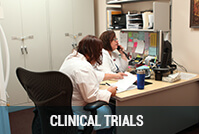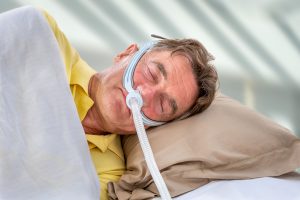CPAP often better than APAP for obstructive sleep apnea
CPAP is often better than APAP for obstructive sleep apnea
Obstructive sleep apnea (OSA) is associated with sleepiness and cardiovascular and metabolic morbidity and mortality. The standard of treatment is full, attended polysomnography (PSG) while adjusting positive airway pressure (PAP). This determines the best fixed pressure that keeps the airway open and is tolerated. This is followed by use of fixed pressure continuous PAP (CPAP). Auto-titrating PAP (APAP) is a lower cost alternative. APAP manufacturers claim it can determine when apneas (stopping breathing) and hypopneas (decreased breathing) occur in sleep, and change the pressure upwards to control the apnea. When it determines no sleep apnea, it lowers the pressure.
However, APAP devices are known to be particularly ineffective at scoring hypopneas. APAP misses hypopneas with gradual flow reductions with desaturations, or flow reductions without distinct recovery breath at the end of the event. APAP mistakenly calls flow reductions hypopneas even when they are not associated with arousals or desaturations. It also mistakes normal changes in airflow when we are lying awake as hypopneas. This can cause more frequent or unnecessary pressure changes and unnecessarily high pressures. It has been shown that some manufacturers’ APAP devices do not successfully control sleep apnea. Others end up using much higher pressures than needed.
APAP’s ineffectiveness may be because it does not detect apneas or hypopneas the way we do when recording or scoring sleep related breathing. The American Academy of Sleep Medicine requires us sleep medicine physicians to monitor airflow, respiratory effort, and oxygen saturation. Without all three, we cannot score sleep related breathing. APAP only monitors airflow. APAP manufacturers then apply their own algorithms to airflow. The result is that the APAP determined apnea-hypopnea index (AHI) differs among manufacturers, and differs from the AHI we determine and report based on sleep testing.
Patients did better upon switching from APAP to CPAP
We just published a scientific paper showing that patients did better upon switching from APAP to CPAP, than they did when they were on APAP. We reported on patients who were switched from APAP to CPAP because they were not showing adequate improvement on APAP, or were having significant side effects with APAP. Switching involved an overnight CPAP titration sleep test in the sleep center. 61% of patients put on APAP had to be switched to CPAP. Most often, patients complained the air pressure felt too high at times on APAP, with resultant worsening of sleep, continued sleepiness or tiredness, high leaks, or even having to turn the APAP off and back on to lower the pressure. 148 patients switching from APAP to CPAP showed more improvement in measures of wakefulness inability and fatigue (SWIFT or sleepiness: wakefulness inability and fatigue test) and sleepiness (ESS or Epworth sleepiness scale) on CPAP than on APAP, SWIFT improved significantly more on CPAP than on APAP (5.3 vs. 4.1 min, p=0.004)). ESS also improved significant more on CPAP than on APAP (3.6 vs. 2.9 min, p=0.011). More patients were complaint on CPAP than on APAP (83% vs. 69% of patients, p=0.006). Patients with lighter sleep or more severe drops in blood oxygen at baseline were more likely to have trouble with APAP and need switching to CPAP.
Others have shown that APAP does not control blood pressure, blood oxygen, or heart rate variability, as well as CPAP. Many insurance companies require APAP rather than CPAP for most, if not all, patients. However, for many patients, APAP is just not as good as CPAP. At the very least, patients with side effects, insufficient response, or inadequate adherence, with APAP, should have an overnight CPAP titration in the sleep center and then be switched to CPAP.










